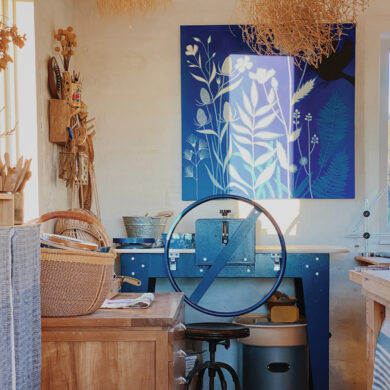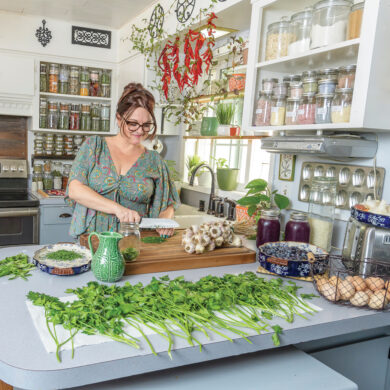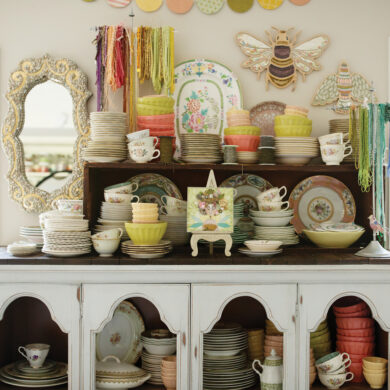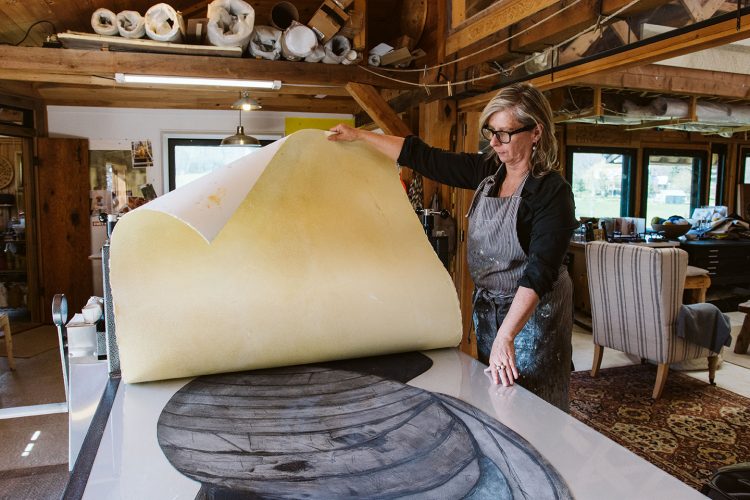
I grew up in a very artistic family, which I initially took for granted. It was not until I was in my teens that I realized the great accomplishments of the artisans within my family. My grandfather, Len Annois, was an accomplished student of naturalism who specialized in landscape painting and large Fresco murals and devoted his life to his work, and my grandmother, Mavis, was a gifted ceramicist and weaver. One of my favorite memories was going into my grandfather’s large studio, fossicking around and playing with all the painting and ceramic tools, charcoal drawings and paintings.
My mother, Rosie, has also been a huge influence as she, too, is a talented artist; she has worked in landscape and abstract painting, fashion and interior design. My mother is a whirlwind of creative energy, and when I was a child, was regularly covered in paint, flour or fabric, while making things on various tables all over the house, with a dog often curled up beneath her feet. She wanted to work with her hands and to make beautiful objects that in return gave her deep satisfaction. Her drive and commitment were infectious. I witnessed and absorbed all of this creativity from the edge of the table.
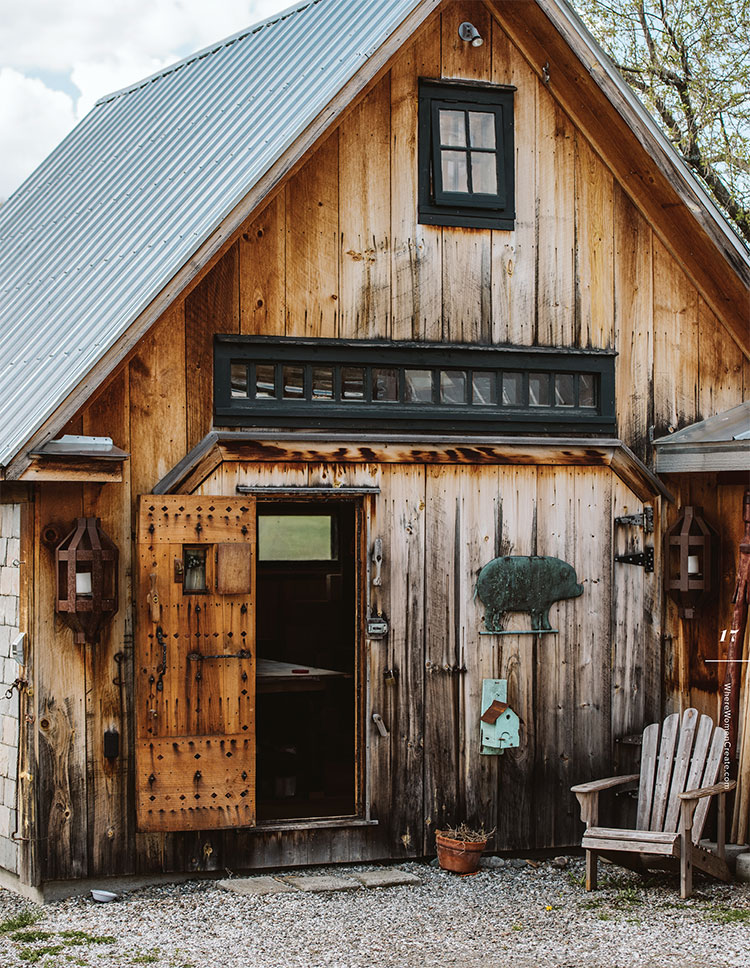
I always wanted a studio of my very own.
When I got older, I went to art school in Australia and received an undergraduate degree in printmaking. I soon left Australia for Albuquerque, New Mexico where I had been accepted into Tamarind Institute, an institute that solely focused on lithography (lithography is a printmaking technique that includes drawing with grease pencils and washes onto limestone blocks, chemically treating it to offset onto paper). I loved the alchemy and hands-on physicality of lithography.
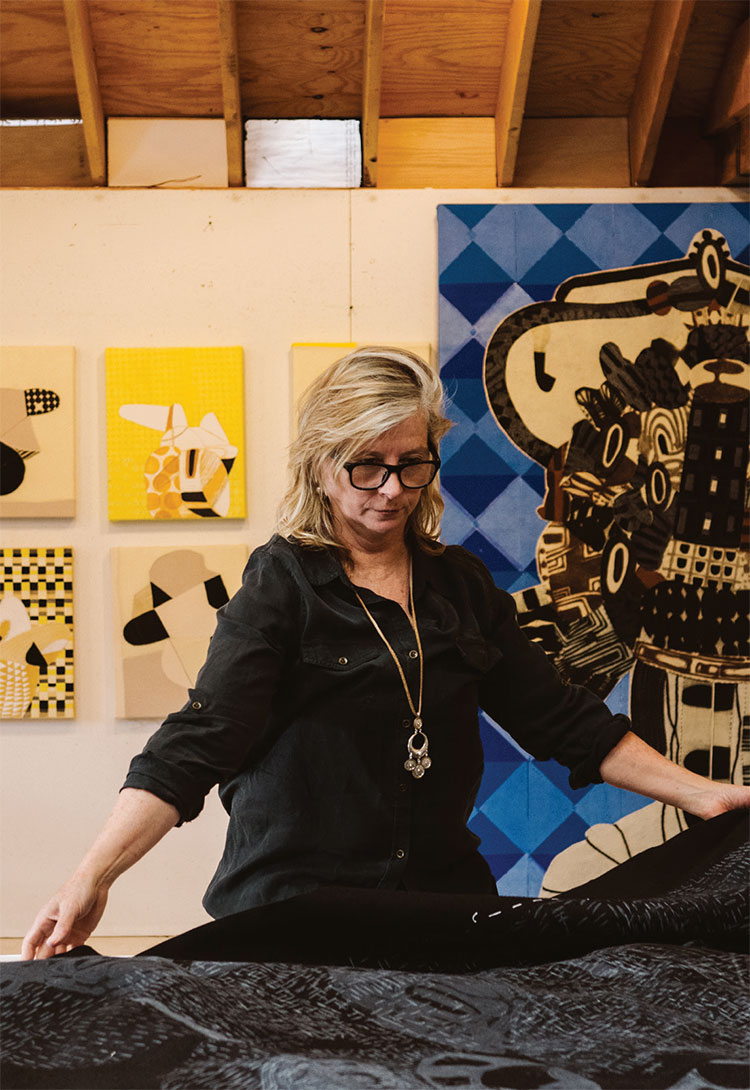
Albuquerque was my home for four years, and lithography became my life. I was collaborating with professional artists weekly and loved the collaborative process but was becoming frustrated, as I could not find much time and energy to make my own work. It was here, however, that I was getting an invaluable education, not only in how to be an artist and how to build a career but color theory, conceptual development and interpersonal skills. I know that the work I make today is directly related to the skills that I acquired during this formative time as a young artist. From this, I learned a deep understanding of color, transparency and how to layer multiple images over each other.
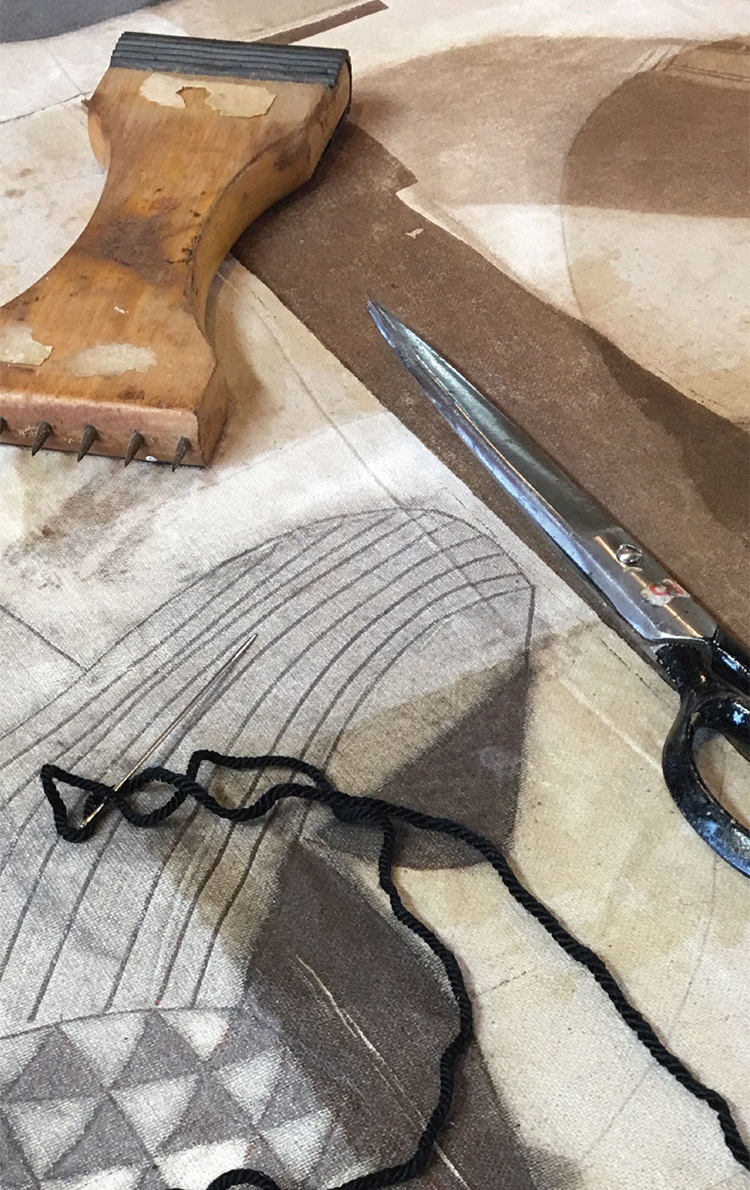
I eventually left New Mexico for New York City where I worked in various printmaking workshops collaborating on professional prints and trying to develop my own work. It was a challenging time for me as I knew no one, and my own work seemed to be slipping away as paying rent was my first priority. I remember telling myself at the time that one day you will be able to focus on making your work so absorb the New York experience, inhale the stimulation and witness the artistic culture—a door will open. Going home to Australia was not an option. I had the drive and determination and wanted to prove to those at home and myself that I could make it work, one way or another.
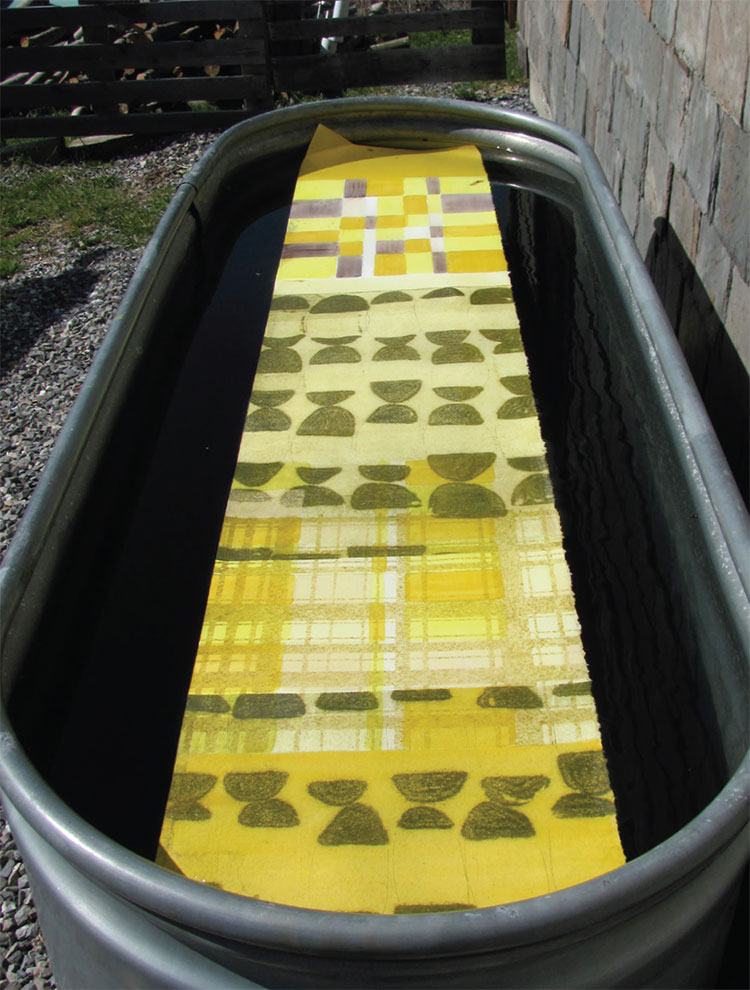
The door did open, and I moved to Vermont to work in a large art colony with artists making professional prints. I had finally landed in a space that provided a private studio, three square meals and lots of time to work, surrounded by other aspiring artists. This time was seminal as it was here that my work started to formulate and expand from the newfound luxury of dedicated time; I was able to finally build a portfolio of prints and paintings. My studio was small, but this is where I fell in love with the collagraph technique (a non-toxic technique that allowed me to adhere materials to its surface or incise the cardboard and then ink it up by hand to create textural surfaces and sharp lines). Cardboard is primarily the material used for collagraph, and it is affordable and easy to source—I had found my material and technique.

“Art is a line around your thoughts.”
— Gustav Klimt, painter
I decided to quit and make my work full time after 10 years of working collaboratively. I moved into my husband’s backroom of his tightly packed woodworking shop. We worked side-by-side for years and just one door separated me from the clouds of dust, noises and, of course, loud outbursts of rock-n-roll music. It was here that my large pieces began in earnest. Japanese papers on the roll were used and had to be soaked in water prior to printing with my large collagraph plates. My press was in a cramped room adjacent to my workspace so I regularly had to carry a 6 feet x 2 feet wet sheet of paper from my space into the pressroom while running through the gauntlet of woodshop dust and noise. I did not mind, however, as I was now working full-time making the work that I always wanted.
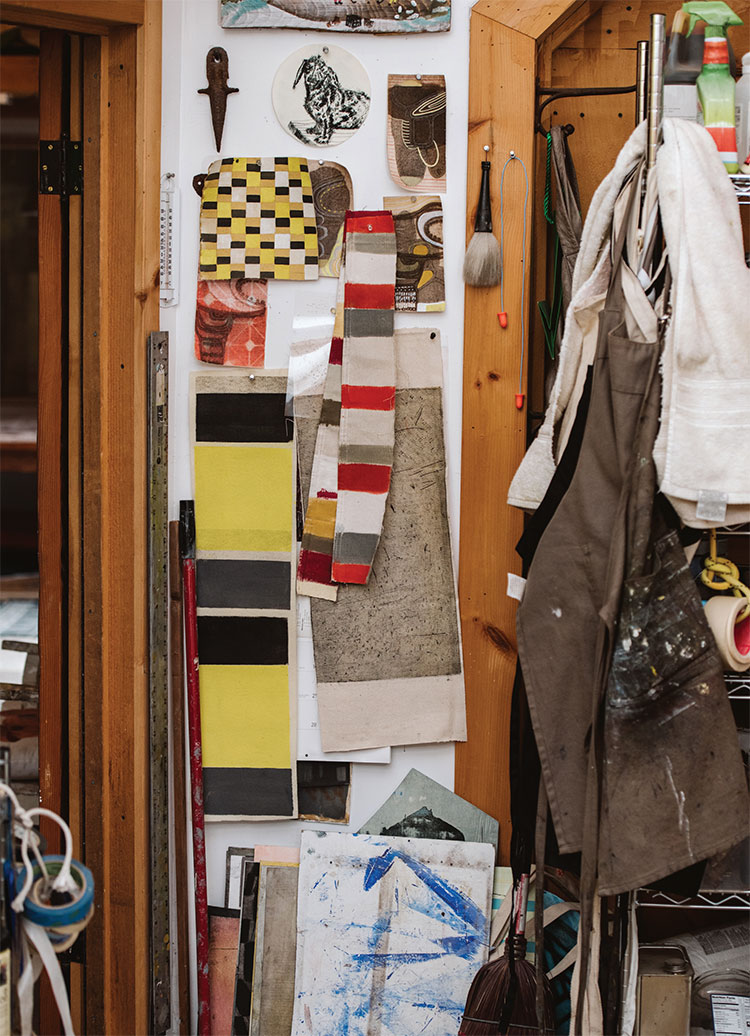
Then, about five years ago, I was afforded the time and money to experiment with my art after I received a Joan Mitchell Grant for painting. While out shopping one day for fleece for my dog’s snow jackets, I came across long and wide bolts of felt that looked to me like rolls of paper. I was so excited as this material could help me address the issues of scale, framing and materiality I had with paper; paper is expensive, especially on the roll for the dimensions that I required. I ran home to test this new surface and promptly ordered 30 bolts of colored felt, and a new chapter in working with fabrics had begun.
“I want my ideas to be located at the end of the tip of my brush. I want my materials to talk back to me. I want to be surprised.”
— Thomas Nozkowski, painter
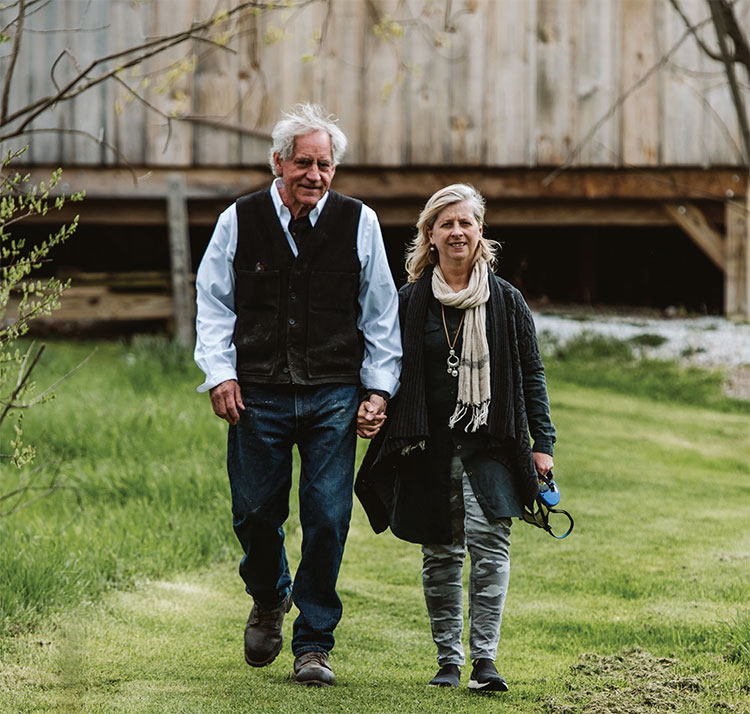
My husband, Roger, and I both soon realized that my work was getting larger, and I needed my own space to stretch out. Roger is a master carpenter and woodworker, and so he built the studio that I now have. It was a project of passion for both of us, and the only building consideration I had was that there was plenty of natural light and wall space. I watched him work his magic over the building, slowly piecing together this one-of-a-kind space that far exceeded my wildest expectations of what a studio could be. The height of the pitched roof, the wall of windows, the spiral columns and the attention to detail is amazing. The metal banded beams, hand-hewn doors and unique blacksmithing of handles, nobs and nails throughout are majestic. A truly inspirational cathedral-type space has been created, and I am incredibly lucky to have now such a private space of my own.
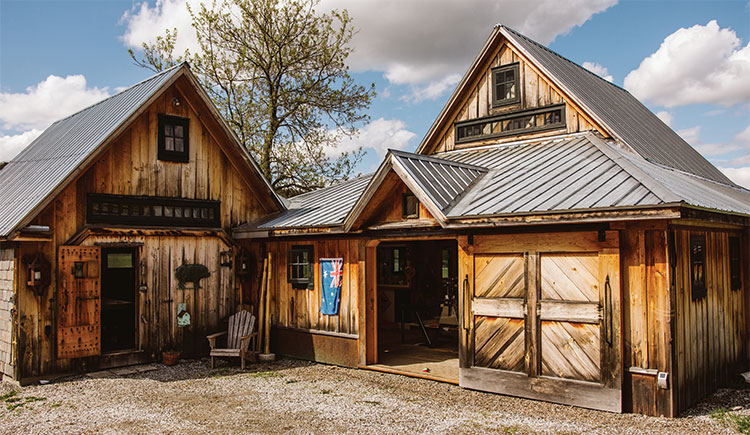
What is new here in my private studio space is the luxury that I now have with a distance of 70 feet that I can view my large pieces. This distance has helped me review and compose in a different way than previously. I have developed a heightened clarity of vision and an understanding of how my interior dimensional spaces can be optimized for full effect.
My studio space also allows me the luxury to rotate my new pieces in different states of completion from table to table (my tables made by my husband, Roger, are 13 feet long and 8 feet wide). This allows me to feel free to roam across a piece with a needle in hand until the thread runs out then onto a new one. The press in my studio is a large 44 x 84 Tackach Etching press, so now I am able to print door-size plates if I want.
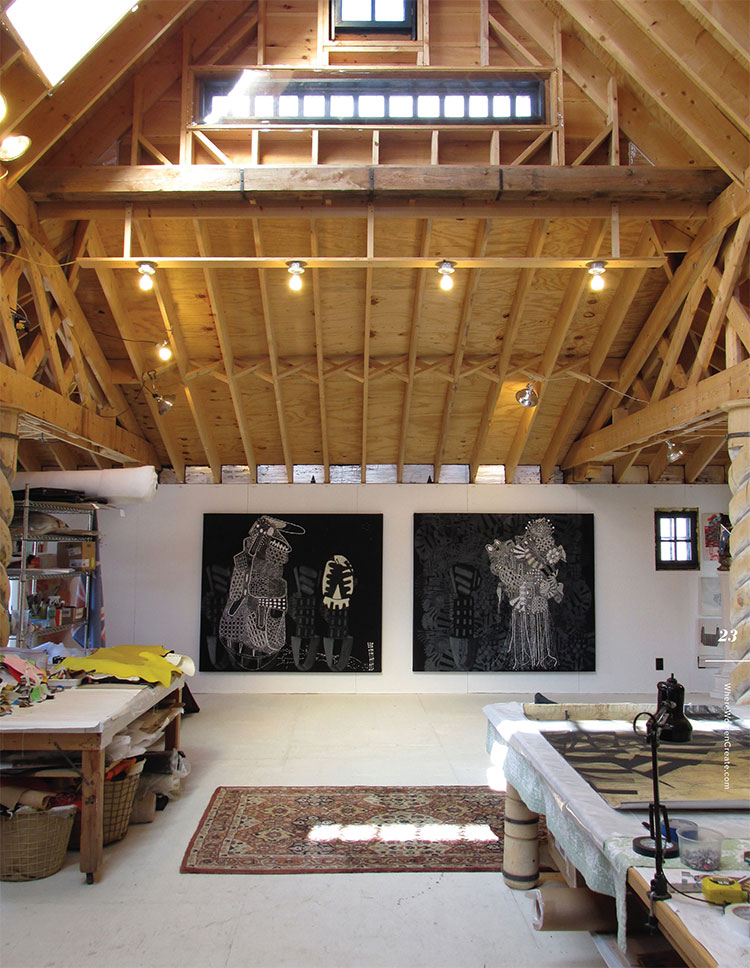
The studio, or as I call it now, the “Taj Mahal,” was designed and built single-handedly by Roger and is just a few feet away from his studio.
By the end of the day, my studio is humming with activity — fabric is strewn all over, inked plates lie exhausted on the ground and colored thread dangles from multiple surfaces. Visual noise and chatter surround each piece as the new work added from the day settle in for the night — lights out and back up the path my husband and small dog in tow go, through the hay meadow, while discussing what is to be done the next day and what’s for dinner.
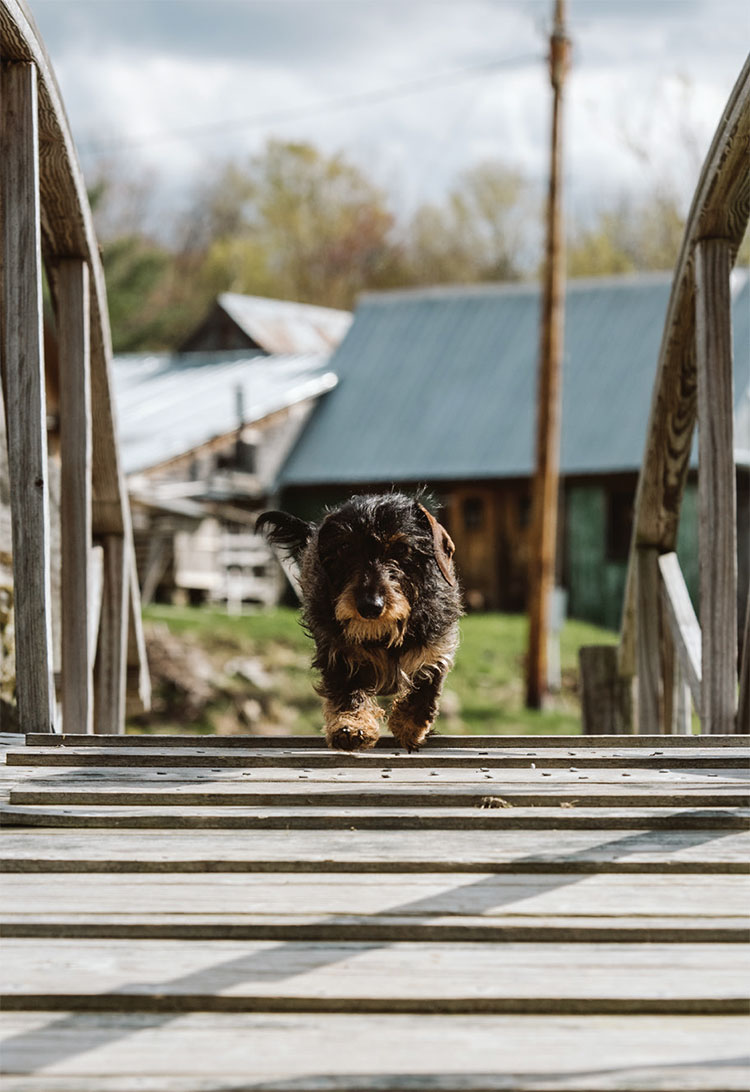

I grew up in a very artistic family, which I initially took for granted. It was not until I was in my teens that I realized the great accomplishments of the artisans within my family. My grandfather, Len Annois, was an accomplished student of naturalism who specialized in landscape painting and large Fresco murals and devoted his life to his work, and my grandmother, Mavis, was a gifted ceramicist and weaver. One of my favorite memories was going into my grandfather’s large studio, fossicking around and playing with all the painting and ceramic tools, charcoal drawings and paintings.
My mother, Rosie, has also been a huge influence as she, too, is a talented artist; she has worked in landscape and abstract painting, fashion and interior design. My mother is a whirlwind of creative energy, and when I was a child, was regularly covered in paint, flour or fabric, while making things on various tables all over the house, with a dog often curled up beneath her feet. She wanted to work with her hands and to make beautiful objects that in return gave her deep satisfaction. Her drive and commitment were infectious. I witnessed and absorbed all of this creativity from the edge of the table.

I always wanted a studio of my very own.
When I got older, I went to art school in Australia and received an undergraduate degree in printmaking. I soon left Australia for Albuquerque, New Mexico where I had been accepted into Tamarind Institute, an institute that solely focused on lithography (lithography is a printmaking technique that includes drawing with grease pencils and washes onto limestone blocks, chemically treating it to offset onto paper). I loved the alchemy and hands-on physicality of lithography.

Albuquerque was my home for four years, and lithography became my life. I was collaborating with professional artists weekly and loved the collaborative process but was becoming frustrated, as I could not find much time and energy to make my own work. It was here, however, that I was getting an invaluable education, not only in how to be an artist and how to build a career but color theory, conceptual development and interpersonal skills. I know that the work I make today is directly related to the skills that I acquired during this formative time as a young artist. From this, I learned a deep understanding of color, transparency and how to layer multiple images over each other.

I eventually left New Mexico for New York City where I worked in various printmaking workshops collaborating on professional prints and trying to develop my own work. It was a challenging time for me as I knew no one, and my own work seemed to be slipping away as paying rent was my first priority. I remember telling myself at the time that one day you will be able to focus on making your work so absorb the New York experience, inhale the stimulation and witness the artistic culture—a door will open. Going home to Australia was not an option. I had the drive and determination and wanted to prove to those at home and myself that I could make it work, one way or another.

The door did open, and I moved to Vermont to work in a large art colony with artists making professional prints. I had finally landed in a space that provided a private studio, three square meals and lots of time to work, surrounded by other aspiring artists. This time was seminal as it was here that my work started to formulate and expand from the newfound luxury of dedicated time; I was able to finally build a portfolio of prints and paintings. My studio was small, but this is where I fell in love with the collagraph technique (a non-toxic technique that allowed me to adhere materials to its surface or incise the cardboard and then ink it up by hand to create textural surfaces and sharp lines). Cardboard is primarily the material used for collagraph, and it is affordable and easy to source—I had found my material and technique.

“Art is a line around your thoughts.”
— Gustav Klimt, painter
I decided to quit and make my work full time after 10 years of working collaboratively. I moved into my husband’s backroom of his tightly packed woodworking shop. We worked side-by-side for years and just one door separated me from the clouds of dust, noises and, of course, loud outbursts of rock-n-roll music. It was here that my large pieces began in earnest. Japanese papers on the roll were used and had to be soaked in water prior to printing with my large collagraph plates. My press was in a cramped room adjacent to my workspace so I regularly had to carry a 6 feet x 2 feet wet sheet of paper from my space into the pressroom while running through the gauntlet of woodshop dust and noise. I did not mind, however, as I was now working full-time making the work that I always wanted.

Then, about five years ago, I was afforded the time and money to experiment with my art after I received a Joan Mitchell Grant for painting. While out shopping one day for fleece for my dog’s snow jackets, I came across long and wide bolts of felt that looked to me like rolls of paper. I was so excited as this material could help me address the issues of scale, framing and materiality I had with paper; paper is expensive, especially on the roll for the dimensions that I required. I ran home to test this new surface and promptly ordered 30 bolts of colored felt, and a new chapter in working with fabrics had begun.
“I want my ideas to be located at the end of the tip of my brush. I want my materials to talk back to me. I want to be surprised.”
— Thomas Nozkowski, painter

My husband, Roger, and I both soon realized that my work was getting larger, and I needed my own space to stretch out. Roger is a master carpenter and woodworker, and so he built the studio that I now have. It was a project of passion for both of us, and the only building consideration I had was that there was plenty of natural light and wall space. I watched him work his magic over the building, slowly piecing together this one-of-a-kind space that far exceeded my wildest expectations of what a studio could be. The height of the pitched roof, the wall of windows, the spiral columns and the attention to detail is amazing. The metal banded beams, hand-hewn doors and unique blacksmithing of handles, nobs and nails throughout are majestic. A truly inspirational cathedral-type space has been created, and I am incredibly lucky to have now such a private space of my own.

What is new here in my private studio space is the luxury that I now have with a distance of 70 feet that I can view my large pieces. This distance has helped me review and compose in a different way than previously. I have developed a heightened clarity of vision and an understanding of how my interior dimensional spaces can be optimized for full effect.
My studio space also allows me the luxury to rotate my new pieces in different states of completion from table to table (my tables made by my husband, Roger, are 13 feet long and 8 feet wide). This allows me to feel free to roam across a piece with a needle in hand until the thread runs out then onto a new one. The press in my studio is a large 44 x 84 Tackach Etching press, so now I am able to print door-size plates if I want.

The studio, or as I call it now, the “Taj Mahal,” was designed and built single-handedly by Roger and is just a few feet away from his studio.
By the end of the day, my studio is humming with activity — fabric is strewn all over, inked plates lie exhausted on the ground and colored thread dangles from multiple surfaces. Visual noise and chatter surround each piece as the new work added from the day settle in for the night — lights out and back up the path my husband and small dog in tow go, through the hay meadow, while discussing what is to be done the next day and what’s for dinner.













